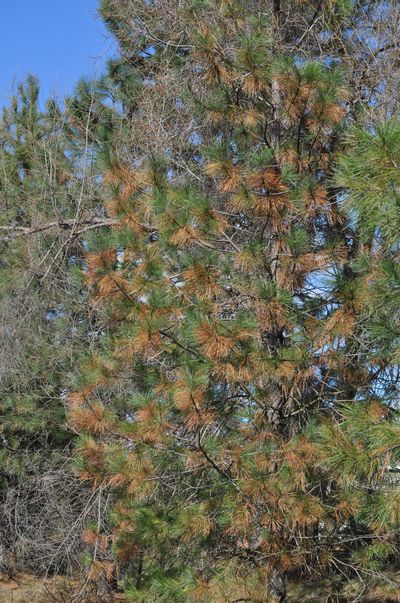It’s time to green up those thumbs

It seems people are getting a bit impatient for spring to arrive. Reports from the WSU Spokane County Master Gardener Clinic say folks are wondering why lawns haven’t greened up yet, when to uncover hibernating plants and why many ponderosa pines in the area are turning brown.
To the first one. The early grasses are starting to green up. Unfortunately, most of them are the very cold tolerant bulbous and annual bluegrass and cheat grass at this point. These grasses will sprout and set seed before the middle of May and then go dormant. Lawn grasses like Kentucky bluegrass and the fescues generally don’t start growing until the soil temperature reaches about 45 degrees. We are getting close to that; I measured 45 degrees in my raised beds last weekend. As we wait, now is a good time to apply an organic, slow release fertilizer to the lawn so it has some nutrients to get started. It is also a good time to aerate the lawn to allow that fertilize deep into the soil.
It’s probably safe to remove mulches from roses and perennials. Remove mulch carefully from the plants so you don’t damage new shoots. Spread the mulch around the garden bed to reduce weeds. Lightly fertilize the perennials with a balanced all-purpose fertilizer. Trim back rose canes to green wood and remove thin and closely spaced canes so you have about four to six well-spaced canes in a fan shape. Remove any new growth below the graft point. This growth is from the root stock which characteristically produces rank growth and ugly flowers. Apply a good rose food and work it in gently to the surface of the soil so you don’t disturb surface roots.
Many ponderosa pines in the region have developed brown needles over the winter. Take heart, they aren’t dying. According to local forestry experts, they have been infected with a series of fungi that are turning the older needles on a branch brown. If you look closely, you will see tiny black dots on the needles. This is a reaction to last spring’s cold, wet weather. Trees often take several months, even years to show a reaction to severe weather conditions. The trees will eventually shed the brown needles and continue growing so there is no need for a treatment of any kind other than a healthy dose of patience.
Lastly, now is a really good time to go after the early weeds. Shot weed or bittercress is emerging now as a rosette of small, round leaves. Within a matter of days, it will develop clusters of tiny white flowers that quickly develop into seed clusters that shoot away from the plant when they are bumped. This can spread seeds a couple of feet in all directions. Right now, the rosettes can be easily uprooted which will reduce the seed crop and future infestations. Keep up with early weeding for shot weed for several years, and you should be able to get it under control. Throw the plants in the trash rather than the compost.